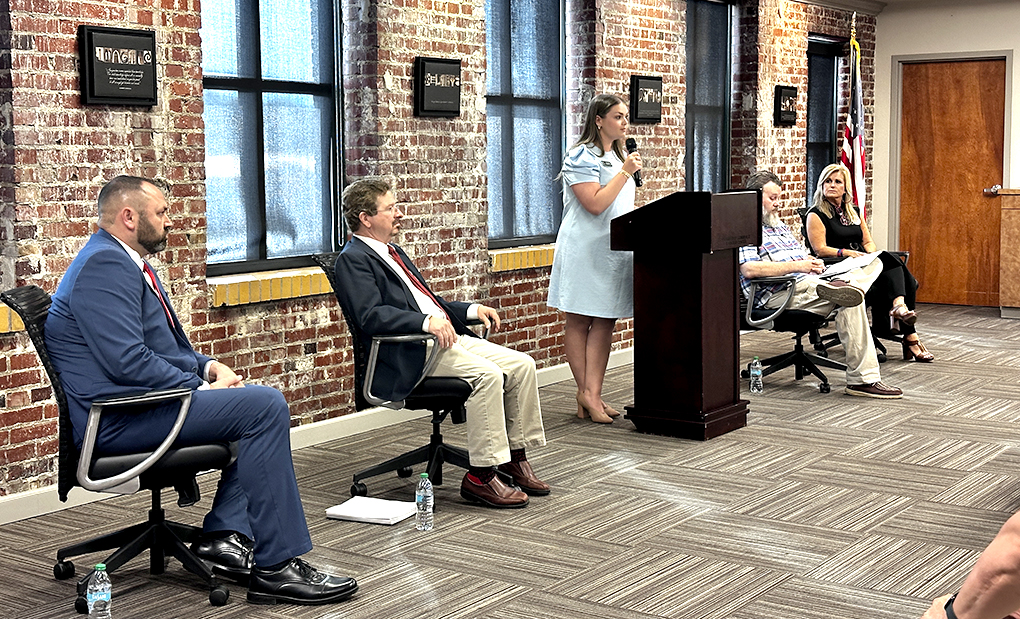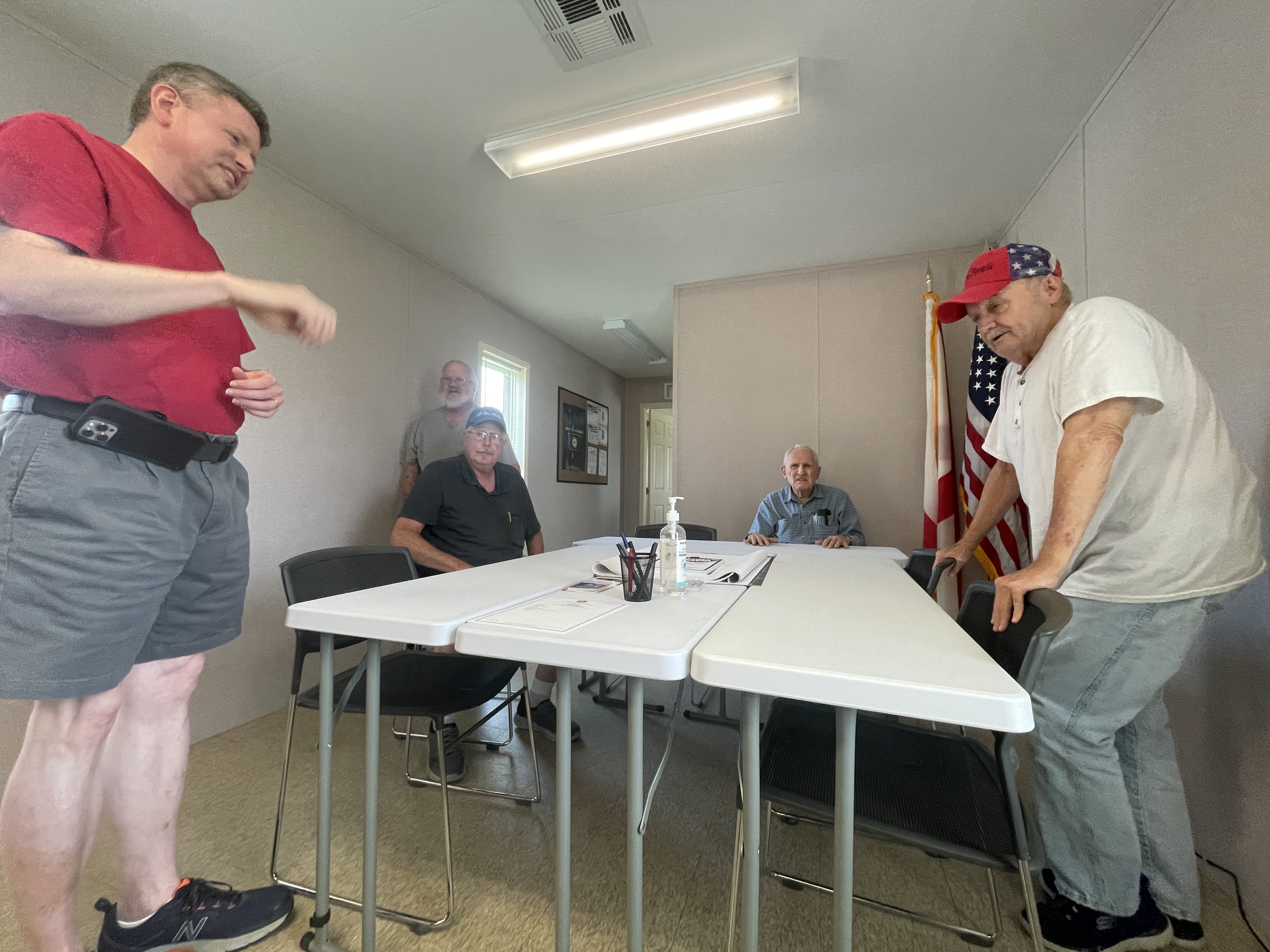Local acts govern where city, county sales tax money goes
Published 11:03 pm Friday, July 20, 2012
Revisions in population figures from the 2010 Census mean every town in Cullman County will see a different set of sales tax numbers reflected in the revenue checks the county’s tax department mails to town halls each month.
For each dollar that’s spent on most of the point-of-sale goods and services people buy in Cullman County, four cents goes into a locally-administered pot of sales tax money that is distributed among Cullman County and its 11 municipal governments.
With the exception of the City of Cullman, sales tax rates throughout Cullman County stand at 8 percent. In the city, the sales tax rate is 8.5 percent, with the additional half cent supplementing the Cullman City Schools’ education budget. That half cent is the only locally-designated sales tax money that is not redistributed among all 12 municipal governments (11 municipalities along with the Cullman County Commission); the half-cent money stays inside the city.
The State of Alabama reaps half of the sales tax revenue collected in Cullman County; the rest is reapportioned according to statutes set forth in the Code of Alabama. For each dollar spent, that means four cents goes to the state, and four cents goes to fund local government budgets.
Four pieces of legislation, drafted into the Code at various times over the past 50 years, set aside each of the four cents to be returned to public coffers locally. Some of the acts also set lower local sales and use tax rates for purchases and transactions involving farming and manufacturing machinery, as well as private and commercial vehicles.
The state’s share of tax revenue for these transactions is similarly based on lower rates than the standard 4 percent retail rate, with vehicle sales taxed at 2 percent; and farming and manufacturing machinery taxed at 1.5 percent.
The First Cent
The oldest, passed in 1963, allocates one cent for every retail dollar to county public schools and the City of Cullman, except for $50,000 shaved off the top and equally split for recreational and industrial development for both Cullman County and the City of Cullman.
The remainder is split 60/40 between the Cullman County Board of Education and the City of Cullman’s general fund, respectively.
There is a .5-percent local collection rate for machinery and vehicles under the 1963 education funding act.
The Second Cent
A legislative Act passed in 1975 allocates a portion of once cent of each sales tax dollar in the following ways:
Two specific dollar amounts are apportioned annually to two separate entities of public interest. The Health Care Authority of Cullman County receives $400,008 per year to augment operational expenses at Cullman Regional Medical Center. Another $100,008 per year is sent to the county for construction and maintenance expenses associated with county roads and bridges.
The rest is split between the City of Cullman and other municipalities according to a formula that sends the city half the remaining money and then divides the other half between the county — which receives 80 percent of what’s left — and the county’s 10 outlying municipalities, which share the other 20 percent.
The 10 municipalities’ share of the money is based on population figures from the 2010 Census. For example, the town of Fairview, which has 446 residents — or 4.56 percent of the county’s total population of 9,788 municipal citizens (not including residents of the City of Cullman) — receives 4.56 percent of the shared municipal money.
There is a .5-percent local collection rate for machinery and vehicles under the 1975 legislation.
The Third Cent
According to legislation passed in 1981, a cent per every dollar of locally-designated sales tax money is broken down using a formula that spreads the money across a diversity of municipal uses.
Public education, both city and county, skim 10 percent from the money collected under the 1981 legislation.
The Cullman County Commission’s county general fund receives 15 percent, with another fifteen percent going into the county’s road fund. Five percent is distributed among the county’s rural volunteer fire departments.
Forty-five percent of funds collected under the same act go directly to the general fund of the City of Cullman.
The remaining 10 percent is divided among the county’s other 10 municipalities using the population-percentage formula outlined above.
There is a .33-percent local collection rate for machinery and vehicles under the amended version of the 1981 legislation.
The Fourth Cent
An act passed by the State Legislature in 1993 distributes 40 percent of every penny of sales tax to the City of Cullman and 40 percent to the Cullman County general fund. The county’s 10 other municipalities share the remaining 20 percent based on the population-percentage formula outlined above.
There is no manufacturing, machine or automotive tax collected under the 1993 legislation.
What Cullman County municipalities receive
In each of the applicable sales tax apportionment acts, every municipality in Cullman County, except for the City of Cullman, receives its share of sales tax revenues according to a single population-percentage formula. That formula considers what portion of the county’s total municipal population a particular town’s population comprises.
The sales tax money is redistributed regardless of where a sale took place. As long as a transaction was done within Cullman County — even in the City of Cullman — the municipalities receive their share according to the formulae set forth by the legislature. None of those formulae take into consideration where a sale occurred, save for the fact that the county seat and largest city — the City of Cullman — benefits from language in the legislation that designates it a greater share.
Even if a town increases in number from one Census to the next, its share of sales tax revenues can fall if other towns in Cullman County grow at an even faster rate over the same 10-year assessment period.
That’s why a city like Hanceville, which grew by 31 people from 2000 to 2010, will receive only 30.47 percent of the total municipal allocation pool, compared with 32.55 percent ten years ago. Some of the county’s other towns simply grew faster and now comprise a greater proportion of the county’s total municipal population.
In real dollars, the result of all the sales tax gerrymandering done by the State Legislature over the years results in monthly disbursement figures that can range from a few thousand dollars, for the smallest town, to nearly $100,000 for the largest.
In July of this year — the first month for which the Cullman County Sales Tax Revenue Enforcement office began applying the revised 2010 Census figures in calculating how the money will be distributed, each of the county’s 10 outlying municipalities received the following:
* Hanceville: $78,234.11
* Good Hope: $59,397.05
* Holly Pond: $20,935.89
* South Vinemont: $19,650.35
* Baileyton: $16,003.62
* Dodge City: $15,557.62
* West Point: $15,373.97
* Garden City: $12,907.84
* Fairview: $11,701.01
* Colony: $7,031.10
* Benjamin Bullard can be reached by e-mail at bbullard@cullmantimes.com, or by telephone at 734-2131, ext. 270.





